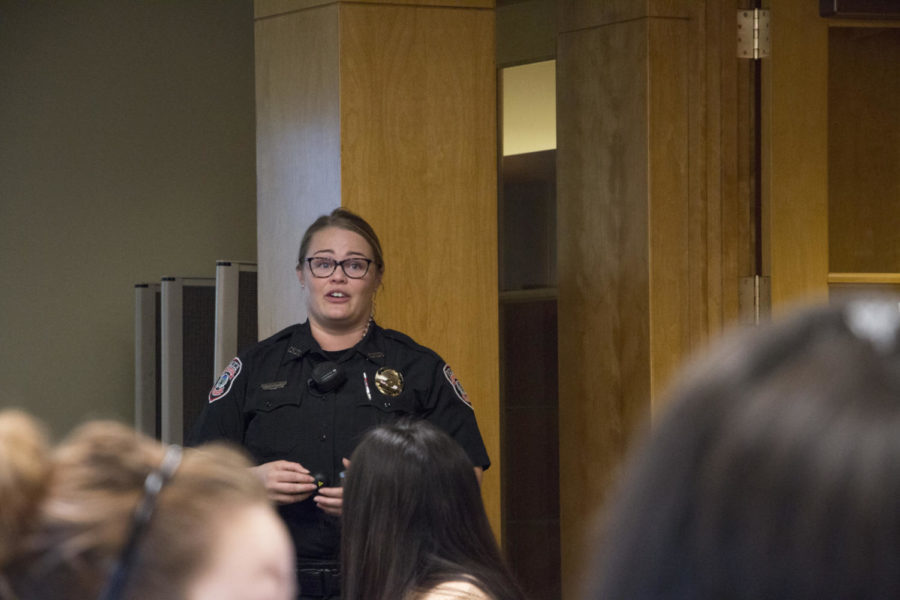Learning the difference between hate speech and free speech
Emily Blobaum/Iowa State Daily
Natasha Greene, patrol and multicultural liaison officer speaks to students at Hamilton Hall for a session on free speech vs. hate speech as part of the Greenlee School’s First Amendment Day program April 19.
April 19, 2017
Natasha Oren, officer and multicultural liaison for the Iowa State Police Department, and Emily Barske, editor-in-chief of the Iowa State Daily, talked Wednesday about the difference between free speech and hate speech.
The presentation was given in Hamilton 127 to about 25 students and faculty members, where they explained what speech is protected, why protecting speech is important and how to lead an effective discussion on the subject.
The discussion began with simple definitions of free speech, hate speech and criminal speech.
Oren explained that although offensive, hate speech is actually a protected form of speech under the First Amendment.
The only type of speech that is unprotected is criminal speech, which she defined as “words or statements that are a violation of Iowa Code.”
Oren offered examples of criminal speech as assault, harassment, incitement to imminent violence or illicit behavior, child pornography and false reports of a fire or bomb.
The speakers then began the discussion on why protecting free speech is important by asking the audience what First Amendment issues had occurred on campus recently.
The main issue that was brought up was the white heritage posters that were spread around campus earlier this semester.
Josh Knight, first-year transfer student from DMACC, brought up the posters during the presentation and reiterated afterward that the posters started a lot of controversy on campus as far as the posters themselves, as well as the reactions.
Barske explained that because of the First Amendment, the people who made these posters had a right to hang these around campus, although these posters could be classified as hate speech.
“If we started restricting these posters on campus and started restricting that messaging, where do we stop with what we can restrict?” Barske asked. She went on to explain that in order to have an effective dialogue about these issues, neither side of the problem can be restricted.
“The main controversy is the response,” Knight said. “There is no real action.”
Although hate speech is protected by the First Amendment and therefore cannot be punished criminally, there are ways to combat it.
“One of the best ways to counter free speech, in which you don’t agree with, is to utilize your own right to free speech,” said Oren.
Michael Bugeja, director of the Greenlee School, added that after the white heritage posters were hung, large “Safe Zone” posters were hung around campus as well to show support for all students.
“If there is one message, you can drown out that message with a chorus,” Bugeja said.
Bugeja added that the Greenlee School has a diversity page on its website and is working on an action plan in the case that something like this happens again.
As for students who want to use their free speech rights to protest on campus, Oren said that ISU Police is willing to partner with groups in order to assure that the protests are safe for everyone involved.
Besides protesting, Barske and Oren gave other ideas on how students can properly use their First Amendment rights. They explained that it is important to respect both sides and listen actively while having these conversations, even if you don’t agree.
“As journalists, we need to hear out the other side,” Barske said. “If you are just preaching about your side and your perspective and you’re not bringing in the other side at all, then you’re just preaching to the choir and you’re not going to reach the people that you want to reach.”
There are also many organizations on campus that students can join that align with their views, and they encourage everyone to become active bystanders in any situation.
Barske reminded everyone, “Never underestimate the power of a voice.”







